Abstract
It is well known that galaxies shape and are shaped by their environments, but the relative contribution of environmental and internal galactic processes remains poorly understood. HI 21 cm is the ideal tracer to study the role of environments in shaping galaxies in the local universe as the extended distribution of neutral hydrogen makes it susceptible to a wide range of environmental effects that produce peculiar HI morphologies. Moreover, HI enables the study of how galaxies obtain and lose cold gas. The HI distribution of galaxies often exhibits warps, lopsidedness, and the presence of anomalous gas (AG) such as the Extraplanar Gas (EPG). In this era of resolved, sensitive HI observations, one exciting possibility is the identification of AG associated with galaxies experiencing a wide range of environmental effects. However, the task of separating AG and the disc is non-trivial due to fundamental limitations induced by instrumental effects (e.g., spatial and spectral resolution), projection effects, and systematic effects (e.g., assumptions, methods).
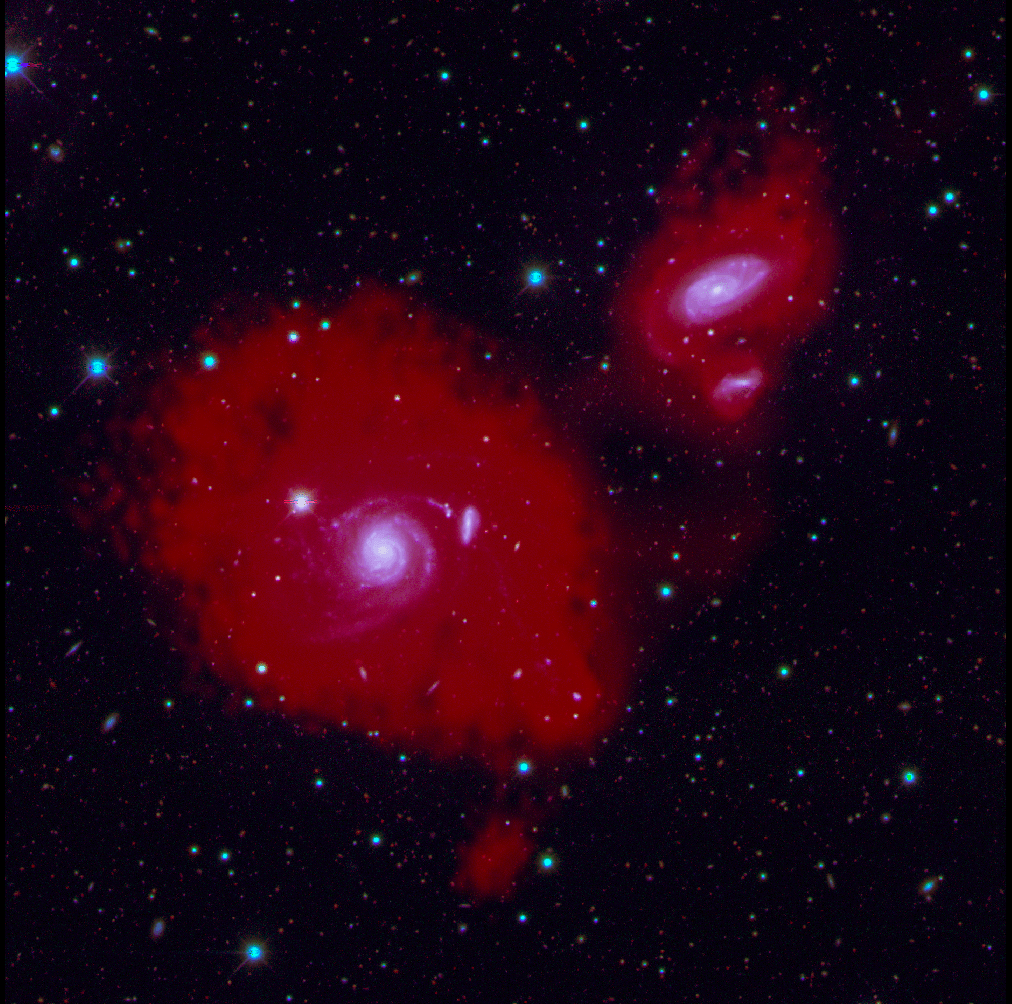 |
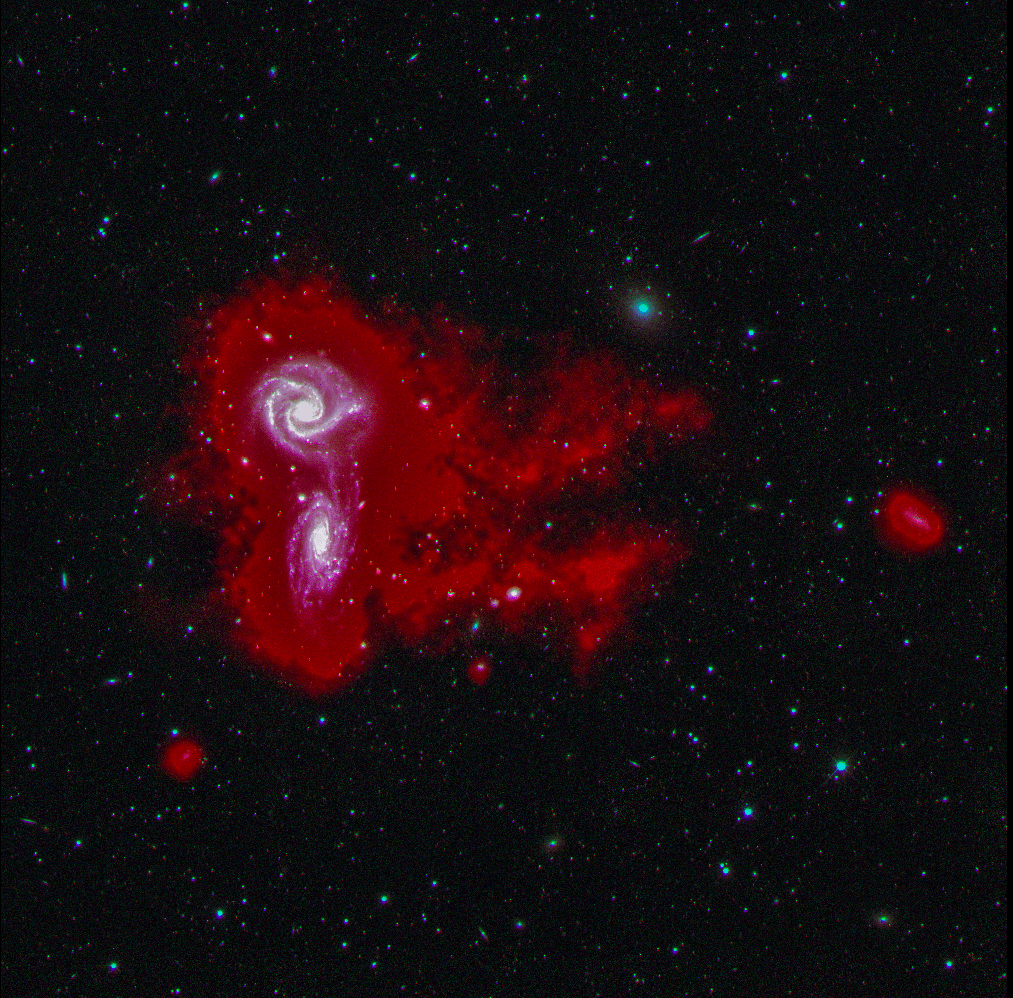 |
|---|---|
| False color image showing the neutral hydrogen distribution in HIPASS J1250-20 observed with MeerKAT | False color image showing the neutral hydrogen distribution in HIPASS J1403-06 observed with MeerKAT |
In this work, we demonstrate a method we developed to separate anomalous gas from the disc based on 3D tilted ring modeling, physically motivated Gaussian decomposition and kinematic tagging. We perform a comprehensive analysis of the kinematics of the neutral gas in two nearby low-mass, gas-rich, late-type dominated, and relatively isolated groups from the MeerChoirs survey. The two groups, HIPASS J1250-20 and HIPASS J1403-06, both contain interacting pairs in the center that showcase unique HI morphologies. In the groups, we investigate the impact of two ongoing co-rotating minor mergers, an intermediate-stage counter-rotating major merger, and an intermediate-stage co-rotating major merger. Additionally, we characterize several previously known and unknown dwarfs in the groups and the extended fields. We extract the kinematics of the extended, warped, and lopsided discs of the interacting galaxies using 3D tilted ring modeling. Employing techniques we developed, we detect and examine copious amounts of anomalous gas produced in the interactions in the form of leading gas, lagging gas, extended envelopes, tails, and bridges. By combining the kinematics, deep optical images, and ancillary evidence from the literature we relate the anomalous gas to star formation in the discs and the interactions. We detect gas exchange between the interacting pairs and enhanced star formation in the galaxies experiencing inflow.
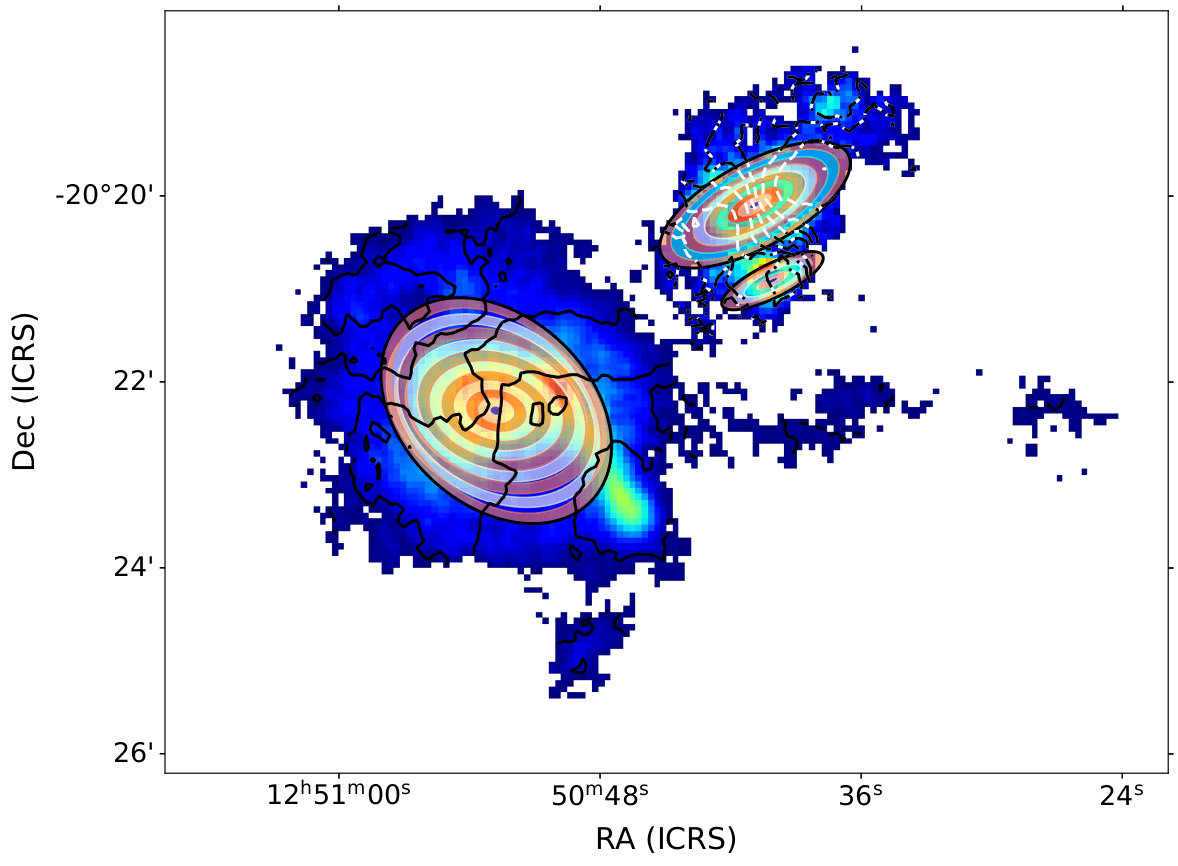 |
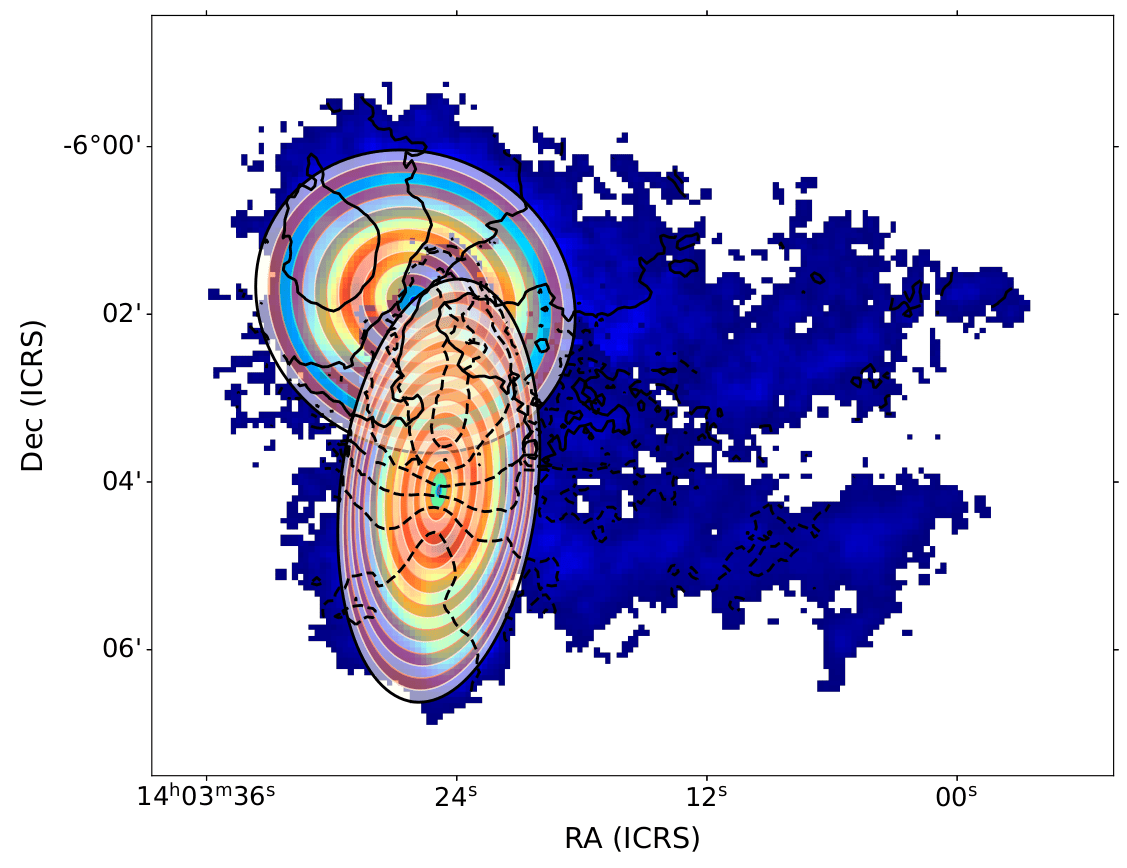 |
|---|---|
| Tilted ring geometry for extracting the kinematics of neutral hydrogen in the discs of the interacting galaxies in HIPASS J1250-20 | Tilted ring geometry for extracting the kinematics of neutral hydrogen in the discs of the interacting galaxies in HIPASS J1403-06 |
Notably, we report the farthest characterized EPG to date in HIPASS J1403:06 at a distance of 40 Mpc, which is also among the most massive EPG reservoirs ever studied. Furthermore, the 150 kpc long envelope of HIPASS J1250-20:S1 with a total HI mass of log M HI ∼ 10.72 M ⊙ is among the most HI-rich galaxies in the literature. We posit plausible formation scenarios for the extended envelope in HIPASS J1250-20:S1 and the ∼ 90 kpc long unidirectional transverse tails observed in HIPASS J1403-06. We suspect misaligned gas accretion from companions for the former and a combination of collisional and tidal origin for the latter. Such studies of gas kinematics and galaxy dynamics across different environments will deepen our understanding of the baryon cycle, galaxy interactions, and the impact of the environment on galaxy evolution.
In J1403-06, using kinematic arguments to infer the motion of anomalous gas in the plane of the galaxies, I found indications of gas exchange between the interacting galaxies. The plots below are shown just as an illustration, for an explanation, feel free to ask me for a copy of my thesis. See this video from Yeager & Struck (2020a) for a plausible collision scenario to explain the unidirectional tails in this group. In the video, the ‘XY’ projection of the snapshot at age > 100 Myr appears qualitatively similar to the HI distribution shown above.
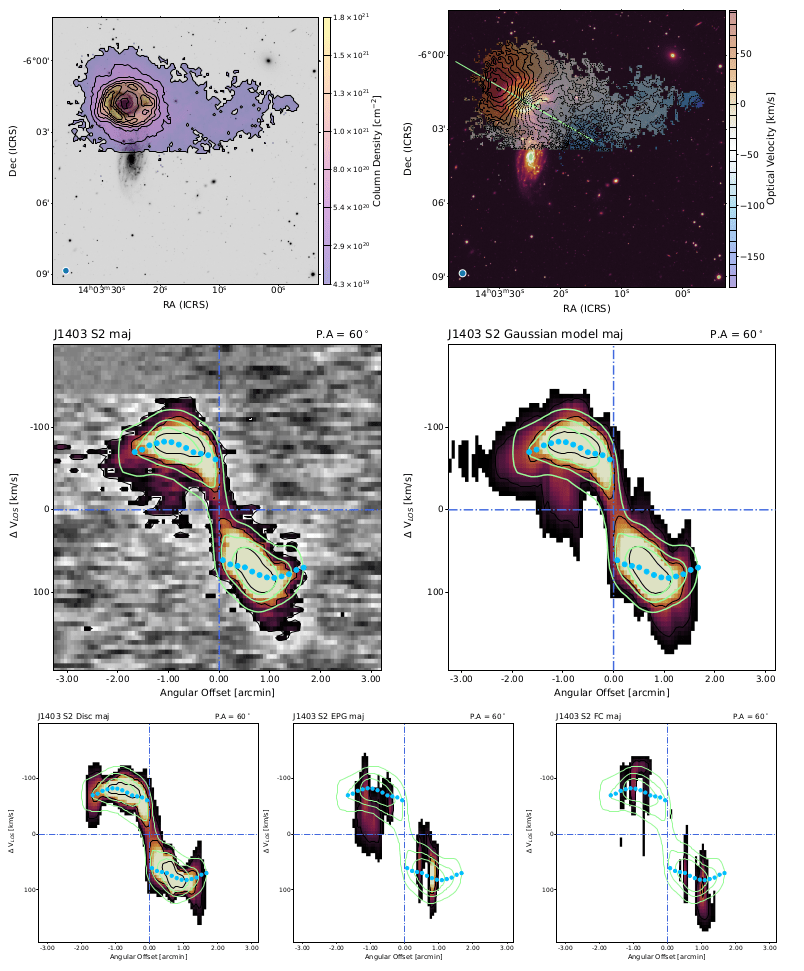 |
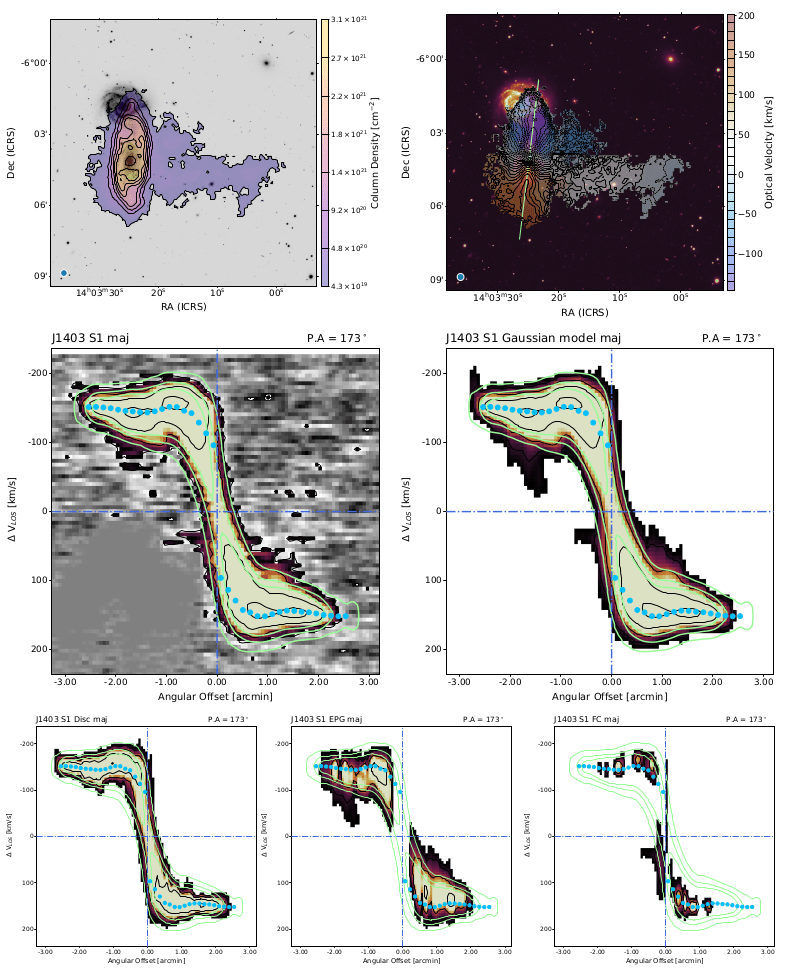 |
|---|---|
| Plots showing the kinematics of the different components in HIPASS J1403-06:S2 | Plots showing the kinematics of the different components in HIPASS J1403-06:S1 |
My thesis begins with the following poem that I wrote after getting inspired by something Curt Struck wrote in his 2006 review article. Every scientific work builds on the works of those from the years before.
quiet revolutions in my mind
silent resolutions taken in kind
invaluable legacies left behind
picking up intricacies entwined
fruits of the forest from seeds once sown
lessons inherited from lives unknown
offshoots of thought grown with fraught
quiet revelations yearning to be sought
each forming a bridge between disparate worlds
I am but one, but the thoughts are more than just one’s
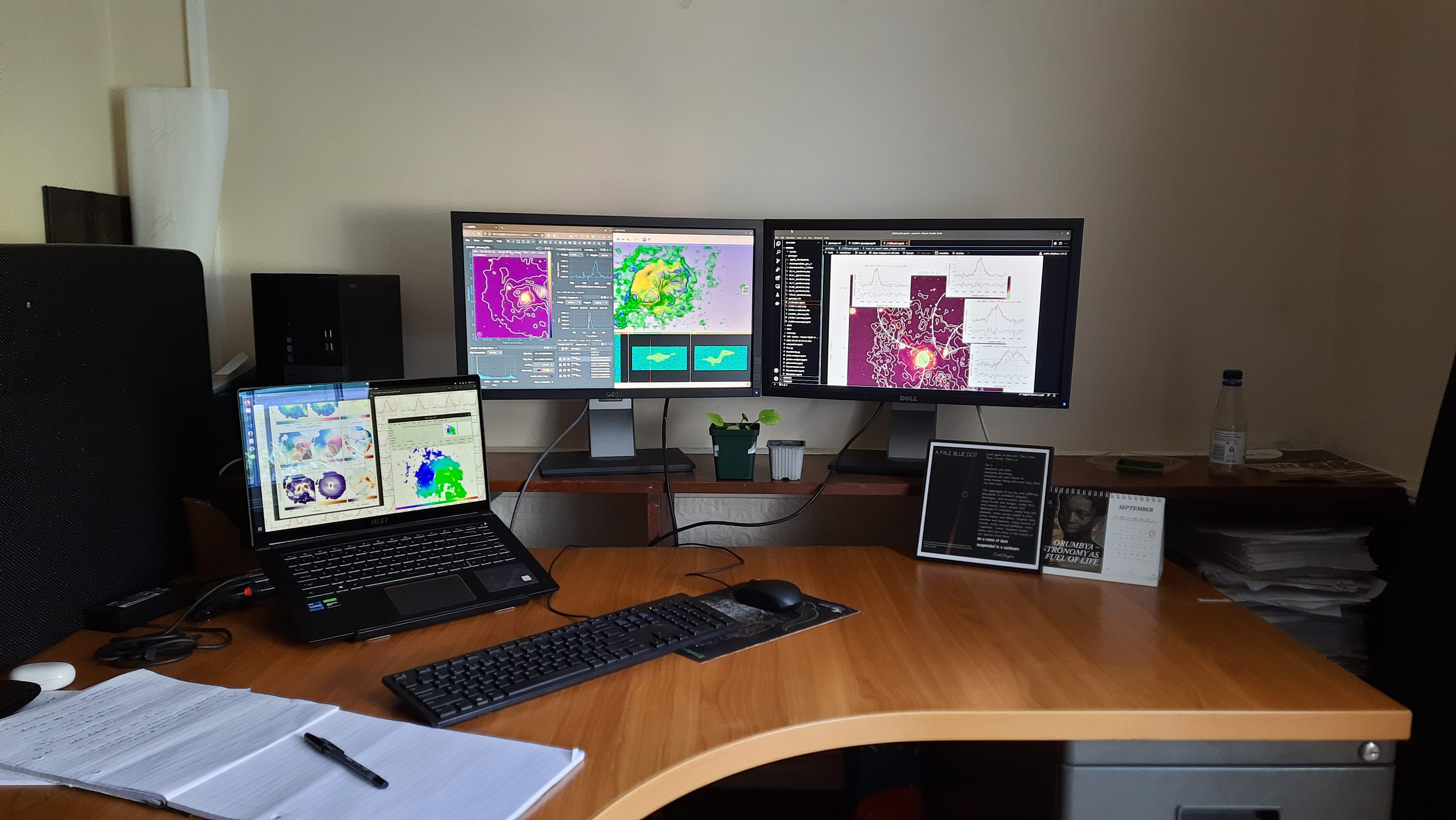 |
|---|
| A picture of my workspace at SAAO, a place that has become a part of me. The picture was taken at a point when I discovered a cruicial aspect of my work |